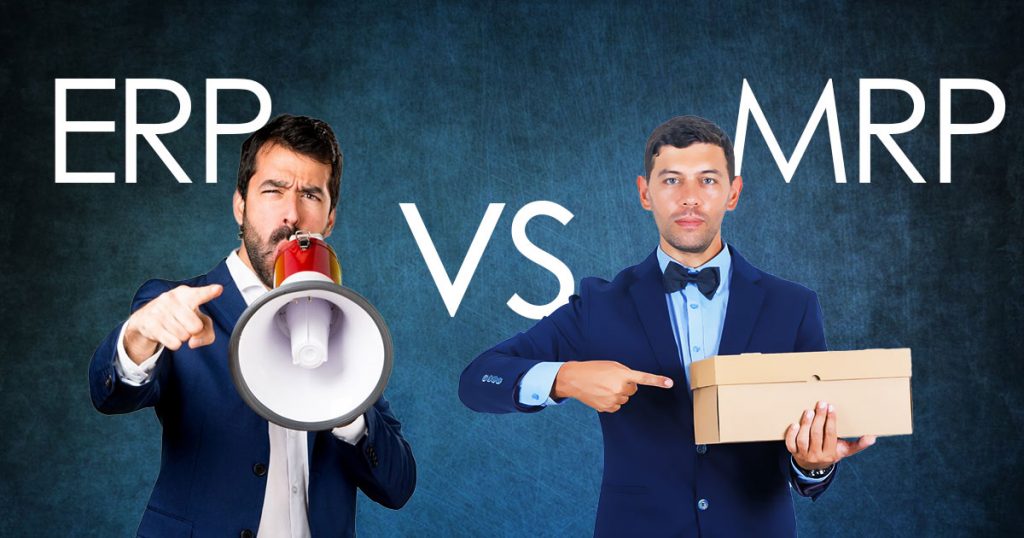Businesses rely on software to streamline operations, improve efficiency, and manage resources effectively. ERP and MRP systems play a significant role in these processes but serve different purposes. Understanding how these systems work and how they differ can help businesses choose the right one based on their needs.
What is MRP?
Material Requirements Planning (MRP) is a system designed to help manufacturers manage production by ensuring they have the right materials at the right time. It helps companies determine how much raw material is needed, when it should be ordered, and when production should start to meet demand without overstocking inventory.
MRP focuses on three main areas:
- Inventory Management – Tracks raw materials to ensure there’s enough stock for production.
- Production Planning – Schedules manufacturing processes efficiently to optimize workflow.
- Procurement Scheduling – Determines when materials need to be ordered to avoid delays.
Manufacturers use MRP to optimize their supply chain, reduce waste, and ensure smooth production cycles. The system calculates demand based on sales forecasts and existing inventory, then generates purchase orders or work orders accordingly.
What is ERP?
Enterprise Resource Planning (ERP) is a broader system that integrates multiple business functions into one platform. While MRP is focused mainly on manufacturing and inventory, ERP covers various aspects of a company’s operations, such as finance, human resources, supply chain management, and customer relationships.
ERP helps businesses centralize data, improve collaboration, and streamline processes across different departments. Some core functions of ERP systems include:
- Accounting & Finance – Manages payroll, invoicing, and financial reporting.
- Human Resources – Tracks employee records, payroll, and benefits management.
- Customer Relationship Management (CRM) – Helps businesses manage customer data, sales, and support.
- Supply Chain Management – Ensures a smooth flow of goods from suppliers to customers.
ERP provides a more comprehensive approach to business management, allowing companies to make data-driven decisions and improve overall efficiency.
How MRP and ERP Work Together
Some businesses use MRP as a standalone system, while others integrate it into a larger ERP system. Since ERP includes MRP as a module, companies that require a complete business solution often opt for ERP.
Main Differences Between ERP and MRP
Scope and Functionality
MRP is mainly used in manufacturing to manage materials and production schedules, while ERP covers a wider range of business functions, including manufacturing, finance, HR, and sales. MRP ensures materials are available for production, whereas ERP integrates multiple departments to streamline communication and workflows.
Integration and Complexity
MRP operates independently or as part of an ERP system, but ERP offers a more comprehensive solution by connecting all business processes. MRP is simpler to implement and use, focusing only on production and inventory, while ERP requires time and investment for full integration across departments.
Business Impact
MRP enhances manufacturing efficiency by optimizing material planning, while ERP provides a broader view of business performance, helping organizations track financials, manage human resources, and improve overall productivity. ERP systems are often necessary for larger businesses with complex operational needs.
Benefits of MRP and ERP Systems
Advantages of MRP
MRP provides better inventory control by preventing shortages and overstocking. It improves production planning to ensure timely manufacturing and helps businesses reduce waste and manage procurement efficiently. By streamlining material requirements, MRP allows manufacturers to optimize supply chain management and maintain smooth production workflows.
Advantages of ERP
ERP increases efficiency by automating business processes and reducing manual tasks. It centralizes data, providing a single source of truth for decision-making, and enhances collaboration by connecting different departments and improving workflow productivity. ERP also offers advanced reporting and analytics, enabling businesses to make informed strategic decisions.
When to Use MRP or ERP
MRP is ideal for manufacturing companies that need to manage materials and production schedules efficiently. It works best for businesses looking to optimize inventory levels and streamline procurement without requiring full business management integration. On the other hand, ERP is suited for companies that need a comprehensive business solution, integrating finance, HR, supply chain, and manufacturing processes. Organizations seeking better reporting, analytics, and data-driven decision-making benefit more from ERP.
Choosing the Right System
Businesses must assess their needs before deciding between MRP and ERP. MRP is ideal for manufacturing companies that need to manage materials and production schedules, businesses looking for an efficient way to reduce waste and optimize inventory, and organizations that do not require full business management integration. ERP is best suited for companies that need a complete business management solution, organizations that want to integrate finance, HR, supply chain, and manufacturing processes, and businesses looking for better reporting, analytics, and data-driven decision-making.
Final Thoughts: Making the Right Choice
MRP and ERP serve different purposes but can work together when needed. MRP is best for manufacturers focusing on production efficiency, while ERP provides a broader solution for managing multiple aspects of a business. Choosing the right system depends on a company’s size, industry, and operational needs. Investing in the right software can lead to better efficiency, cost savings, and improved decision-making across the organization.

